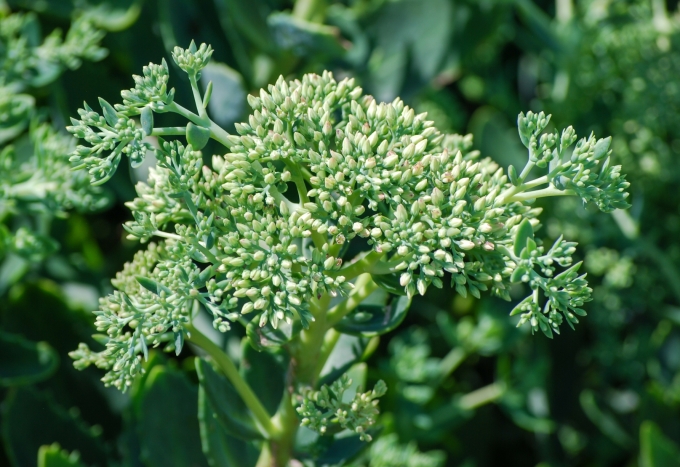Common Name: Autumn Joy Sedum, Autumn Stonecrop
Family: Crassulaceae
Plant Type: Herbaceous Perennial
Native Range: Garden hybrid (Hylotelephium telephium × Hylotelephium spectabile)
Hardiness Zones: 3–9
Height: 1.5 to 2.0 feet
Spread: 1.5 to 2.0 feet
Bloom Time: Late summer to fall (August–October in Nebraska)
Bloom Description: Broad, flat clusters of star-shaped flowers that emerge pink, deepen to coppery-red, and dry to a rich russet-brown
Sun Exposure: Full sun
Water Needs: Low
Soil Preference: Well-drained soils; tolerates sandy, rocky, or poor soils
Management Level: Low
Suggested Use: Borders, rock gardens, xeriscapes, pollinator gardens, containers
Attracts: Bees, butterflies, and other late-season pollinators
Tolerates: Drought, heat, poor soils, deer, urban conditions
Notable Features: Long-lasting blooms, succulent foliage, excellent drought tolerance, winter interest from dried flower heads
Nebraska Growing Notes:
Autumn Joy Sedum is a classic, resilient perennial that thrives in Nebraska’s hot summers, droughts, and heavy soils, making it a favorite in both home gardens and commercial landscapes.
It performs best in full sun with well-drained soil and requires almost no supplemental water once established. Its upright, mounded habit remains tidy through the growing season, and its fleshy, gray-green leaves store water during dry spells.
The flowers emerge in late summer when other perennials are fading, providing critical nectar for pollinators and migrating butterflies. The dried flower heads persist through winter, adding structure and interest.
Landscape Use:
Excellent in borders, rock gardens, xeriscapes, foundation plantings, and pollinator-friendly gardens. Its compact form and reliable performance also make it a good choice for containers. Pairs beautifully with ornamental grasses, Echinacea, Rudbeckia, Salvia, and other drought-tolerant perennials.
Caution:
Non-toxic and deer-resistant. Stems may flop in very rich or overly moist soils — avoid overwatering and divide every 3–4 years to maintain vigor.
Garden Locations:
Bed(s) 1, 2, 7

